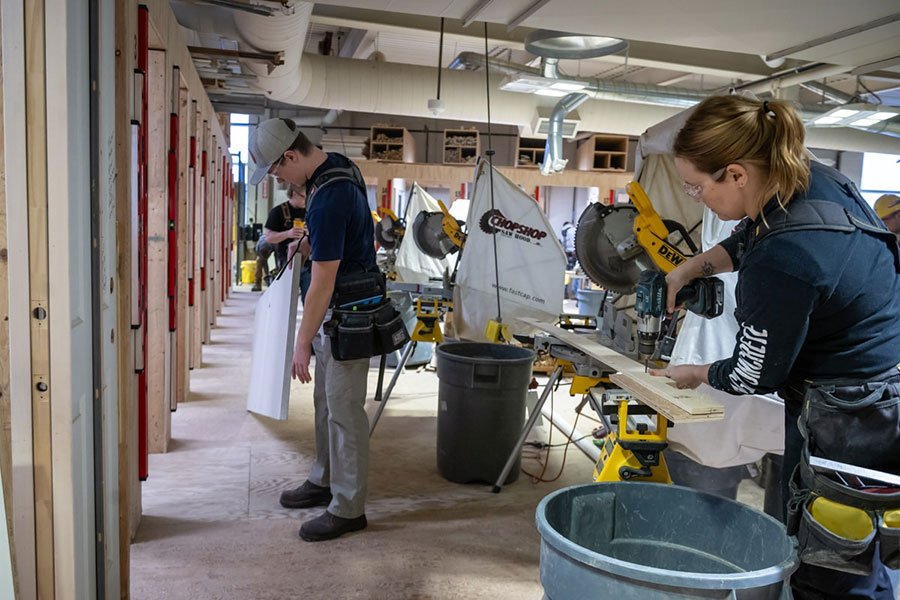In Canada, the skilled trades landscape is changing. There is a widening gap between qualified skilled trades workers and those available to fill those work boots. While the skilled trades offer many young Canadians a diverse array of fulfilling, high-earning career opportunities, the misconceptions surrounding the skilled trades cause new workers to avoid pursuing these fields.
What are the skilled trades?
Ontario identifies over 140 skilled trades. While the skilled trades often involve working with your hands, there is a wide breadth of careers that fall under the umbrella of skilled trades. Jobs like horticultural technicians and child development practitioners are skilled trades. There are also needs for people with the skills for job site and project management in areas that might be considered more “traditional” skilled trades, like construction or welding.
Why is there a skilled trade shortage?
Several factors have combined to cause the skilled trades shortage. In simple terms, there are not enough people interested in pursuing a skilled trade but the demand for work of this type continues to grow. The government of Ontario has a goal of 1.5 million new homes built by 2031, which will require 100,000 new skilled trades workers within the decade.
Misconceptions
The skilled trades have a branding issue. Many people believe myths about the skilled trades that are simply incorrect. Mistaken assumptions like the belief that skilled trades don’t pay well (they do) or that they require manual labour and brute strength (they do not) cause people to avoid roles in the skilled trades.
Demographics
Experts who have worked in the trades for many years are reaching retirement age. Right now in Ontario, at least one in three workers with an apprenticeship or trade certificate is 55 or older. There are few young workers interested in filling the roles that these retirees are leaving behind. Additionally, the mistaken assumption that the skilled trades are for men when women excel in the trades causes a large chunk of the population not to consider these careers.
Lack of Awareness
High school students, teachers and parents aren’t aware of the career pathways and opportunities within the skilled trades. While the skilled trades offer high-paying careers for individuals with highly technical skill sets, there is the unfortunate misconception that subpar students “settle” for a career in the skilled trades. This kind of misconception has created a bias in parents, teachers and students towards university.
Who can fill this gap?
If you’re looking at career pathways as a young person or looking to retrain for a new career, you can help fill this gap–and there are plenty of reasons to choose a career pathway in skilled trades beyond filling a gap in workers.
Why does the shortage of skilled trades workers make it an even better career choice?
Besides the fact that the Canadian economy needs more people to pursue the skilled trades, what’s in it for you?
- Shorter, cheaper education: college tuition tends to be cheaper than university and a skilled trades certificate typically takes only a single year to complete, as compared to a university degree’s four years.
- Earn while you learn: apprenticeships allow you to make money while earning your apprenticeship certificate.
- Available funding: the Canadian government is encouraging more people to go into a skilled trade with loans and grants for training, as well as for employers.
- Support: initiatives like Fanshawe’s new Don Crich Skilled Trades Accelerator offer support for those pursuing a skilled trades certificate or apprenticeship.
- High demand for workers: companies are hiring workers in these areas, making it easier to acquire a job right out of training.
- Above average income: while the average Canadian salary in 2023 was $63,181, the median salary for skilled trades workers can range from $80,000 to $100,000.
Learn more about Fanshawe’s skilled trades and apprenticeship programs






